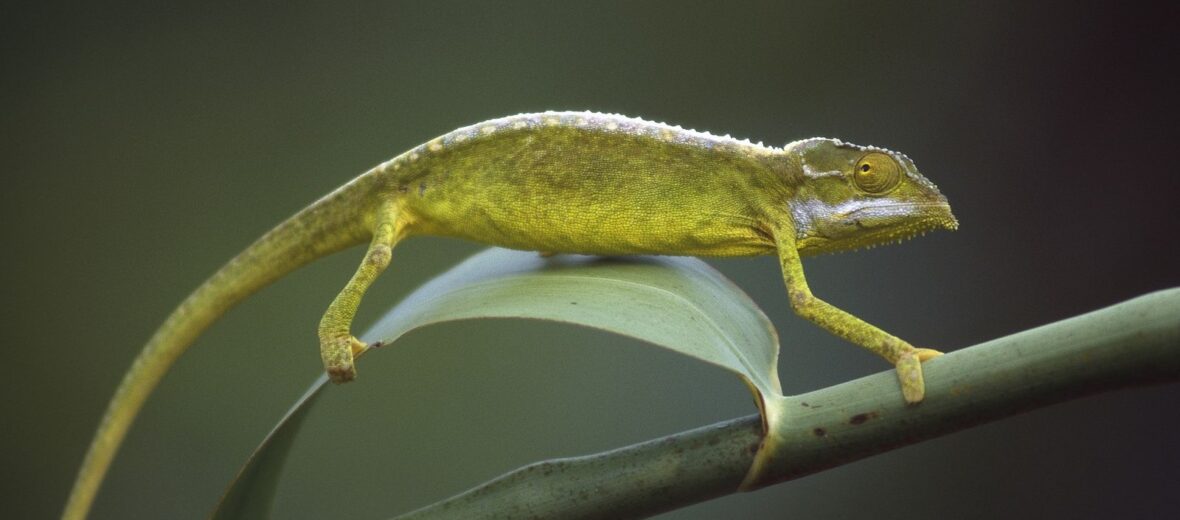
The tiger chameleon, aka Seychelles tiger chameleon, is only found on the Seychelles islands of Mahé, Silhouette, Sainte Anne, and Praslin. They face the threats of habitat loss and destruction at the hands of residential and commercial developments, farming, ranching, tourism, fires, and mismanaged fire suppression efforts; roads and railroads, that divide their territory and can result in vehicle strike; invasive species, in the form on the yellow crazy ant; the threat of lizard fungal disease exists; and climate change, that brings about droughts, extreme temperatures, storms, and flooding. The IUCN lists these chameleons as Endangered. Their population trend is listed as unknown. They are also listed as Critically Depleted.
First the Stats…
Scientific name: Archaius tigris
Weight: Up to 3+ ounces
Length: Up to 6.3 inches
Lifespan: Up to 6 years
Now on to the Facts!
1.) There are only less than 2,000 wild individuals remaining, to date.
2.) Like all known chameleons, the tiger chameleon is diurnal (active during the day).
3.) Just like all chameleons, they come equipped with a long, sticky tongue that can be fired at incredible speeds at their prey.
4.) These chameleons are, like all known chameleons, insectivores (feed exclusively on insects and their larvae).
5.) They are preyed on by snakes and birds.
But wait, there’s more on the tiger chameleon!
6.) These chameleons as well as their habitats are protected within the Mahé and Praslin National Parks.
7.) Females lay up to 12 eggs.
Did you know…?
A chameleon can fire its tongue at a target in 1/100th of a second!
8.) Eggs are laid on pineapple plants and palm trees.
9.) They face the threat of habitat destruction as well, from cinnamon plants and the room needed to grow them.
10.) Chameleons, contrary to popular belief, do not change color to blend into their surroundings. They instead alter their colors based on their mood. If threatened, for example, they will sometimes turn an almost black color. When mating, their colors becaome more brilliant.
Now a Short Tiger Chameleon Video!
This video talks about chameleons, in general.
Be sure to share & comment below! Also, check out the Critter Science YouTube channel. Videos added frequently!
Want to suggest a critter for me to write about? Let me know here.
Learn more about all kinds of cool critters, right here!
Photo credit: Hans Stieglitz



